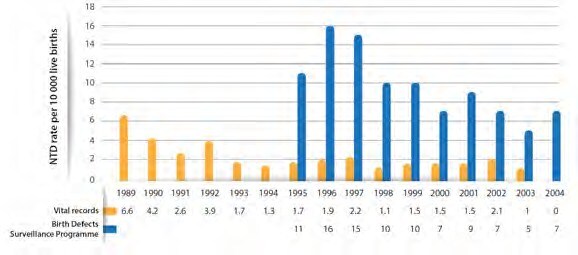3.4 Case-Finding

On this Page
What are some potential data sources available for identifying cases? In a hospital-based reporting system, which hospital units / departments are reporting congenital anomalies?
Possible responses:
- Delivery units
- Paediatric, neurosurgery, orthopaedics units
- Surgery units
- Vital records (birth and death certificates)
- Neonatal care units
- Pathology units
Using multiple data sources, such as data from units other than the delivery unit, may improve data quality by increasing the amount and level of information available for diagnoses and case detection.
What are some other potential data sources available for identifying congenital anomalies in a population-based reporting system?
Possible responses:
- Surgical hospitals or any other hospital that provides treatment services
- Treatment clinics
- Rehabilitation clinics
- Genetic laboratories
- Clinics
- Foundations and associations that help children born with congenital anomalies
- Health insurance companies’ databases
- Vital records (birth and death certificates)
- Health information systems
- Hospital reporting systems
- Pathology units
What does this figure demonstrate?
Possible responses:
- This example demonstrates how using multiple data sources increased the case detection compared to only using vital records.
- It shows 16 years of vital records data and 10 years of data from multiple sources.
- The data are for neural tube defects.
- The birth prevalence of neural tube defects has declined over time.
- Multiple sources identify more cases with neural tube defects.
- Vital records usually include data at birth and multiple sources may include other age cut-off values that allow for identification of cases later in life.
Page last reviewed: October 31, 2018
